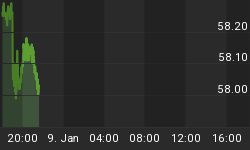Membership in labor unions fell to just 10.5 percent last year to arrive at a figure that is the lowest since 1983, when the Bureau of Labor Statistics (BLS) started tracking it for the first time.
The latest BLS data shows that union membership in 2018 was down 0.2 percent from the previous year, with 14.7 million wage and salary workers signed on, compared to 17.7 million in 1983, or 20.1 percent.
Public sector workers—as is the norm—are more unionized, with 33.9 percent in 2018, compared to only 6.4 percent of private sector workers. Protective services, education, training and library occupations saw the highest rate of union membership, while men are more likely to be unionized than women, and races other than white more likely as well.
The reasons are many and varied, but one of the biggest causes of the decline could be the loss of American manufacturing jobs and the increase in demand for college-educated workers who generally aren’t the union type.
When it comes to manufacturing jobs, unfortunately, the issue is so highly politicized that it is difficult to paint a clear picture and various metrics are hijacked by polarization. Trolling for headlines will leave the reader highly confused as to whether we are gaining or losing these jobs.
According to Market Watch, as of December, the U.S. had the same number of people working in the manufacturing sector as it did 70 years ago, with 32,000 positions added last month, bringing the total number of positions to 12.84 million.
The media outlet also notes that 264,000 new manufacturing jobs were added in 2018, which means the highest number of new workers since 1988.
According to Forbes, manufacturing jobs are growing at a rate that is more than 700 percent higher under Trump than it was under Obama. Related: Private Firms Spent Record $93 Billion On Natural Resources
Unions are definitely not a thing of the past, whatever 2018 says. Keep this in mind: While the number of unionized workers fell from 14.8 million in 2017 to 14.7 million in 2018, we also saw an increase in workers overall, skewing the data.
And the AFL-CIO labor federation, which represents 55 unions, says it’s still going strong.
“[Last year] was one of the most substantial years for collective action in American history,” the federation said in a memo. “In the face of unprecedented attacks, the labor movement continues to show tremendous resilience. Public approval of unions is soaring. And new organizing campaigns in non-union workplaces are gaining steam.”
In fact, based on a 2018 Gallup poll, over 60 percent of Americans approve of unions—and that figure represents a 15-year high.
The public has had an increasingly positive view of labor unions in recent years. A 2018 Gallup poll showed that 62 percent of Americans approve of labor unions today, a 15-year high.
Union’s helping drive equality, at the end of the day—but there is a dangerous socio-economic gap brewing.
According to The Economic Policy Institute, “Union decline can explain one-third of the rise in wage inequality among men and one-fifth of the rise in wage inequality among women from 1973 to 2007. Among men, the erosion of collective bargaining has been the largest single factor driving a wedge between middle- and high-wage workers.”

(Click to enlarge)
By Fred Dunkley for Safehaven.com
More Top Reads From Safehaven.com

















